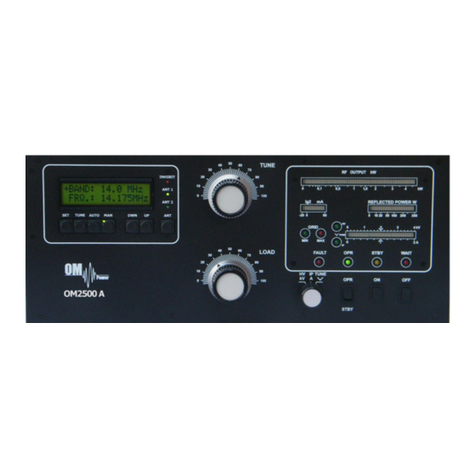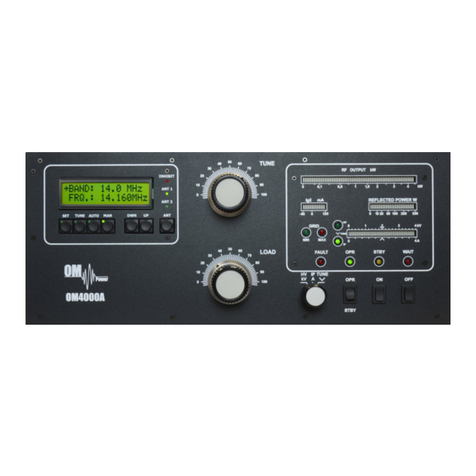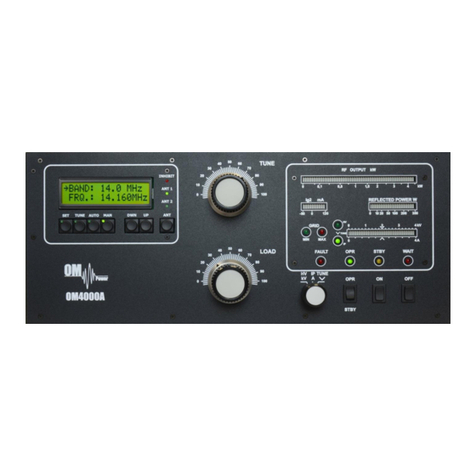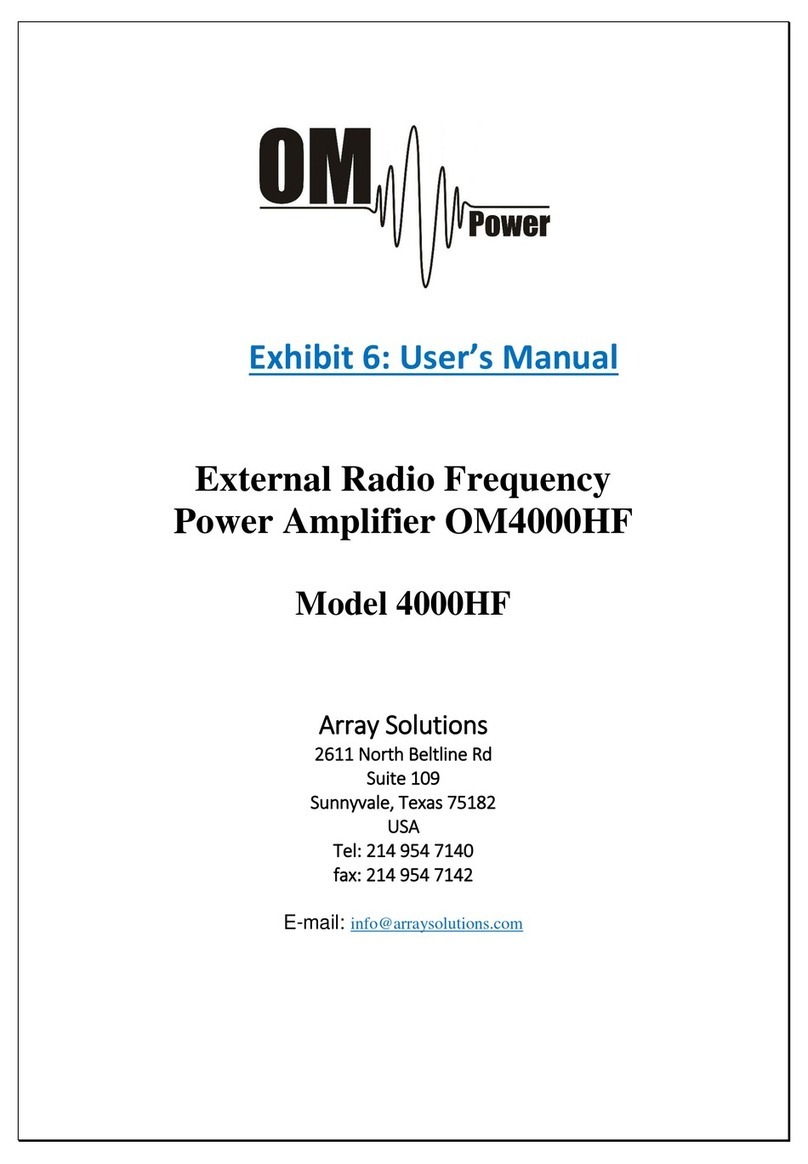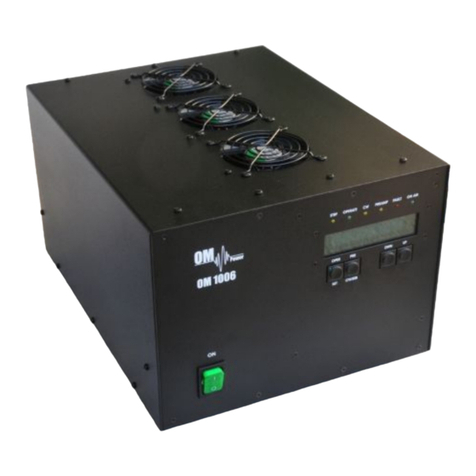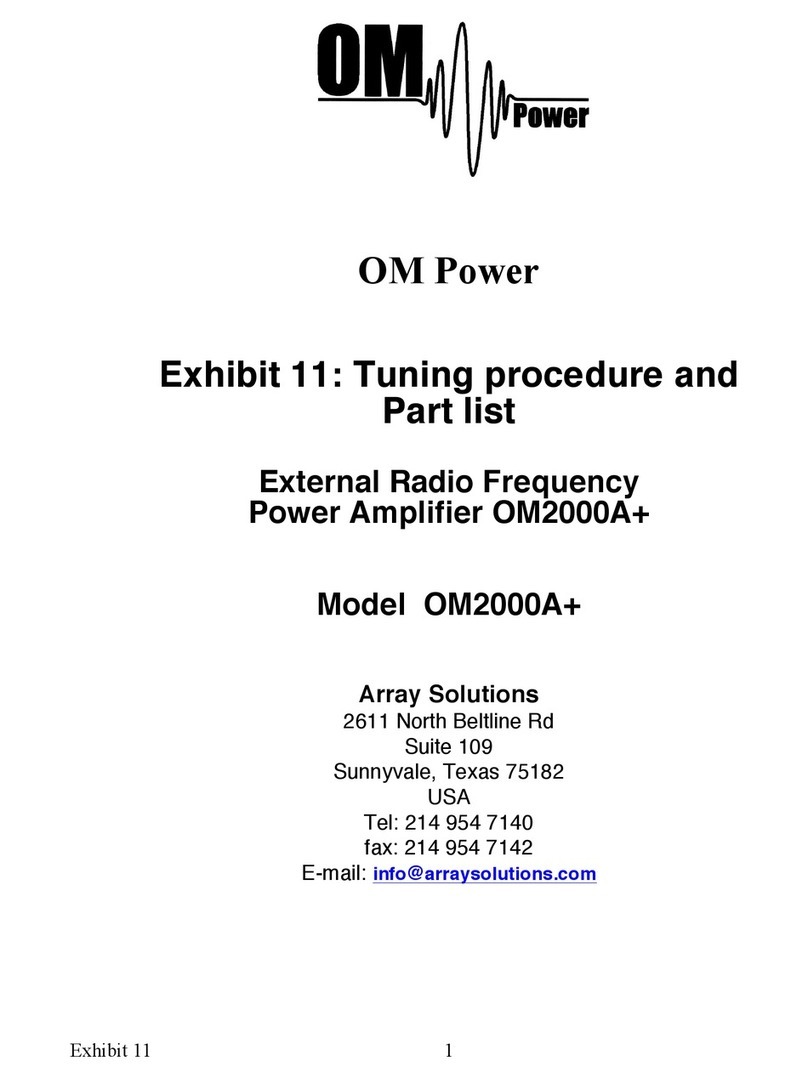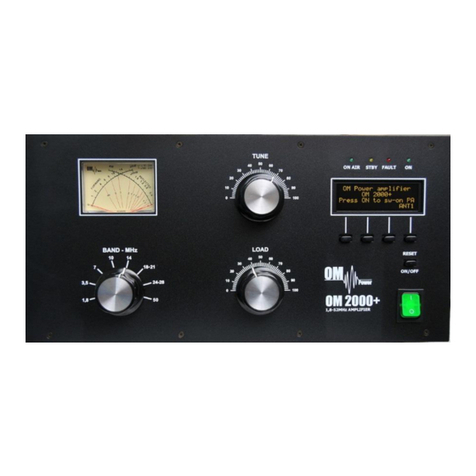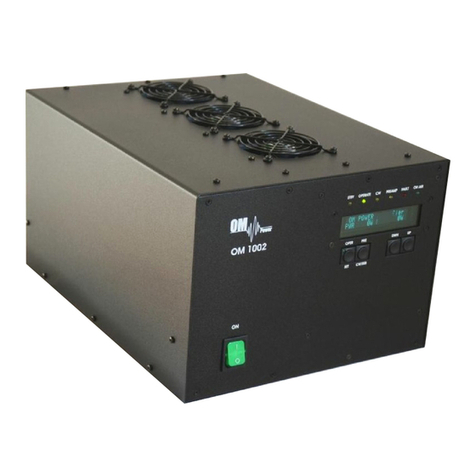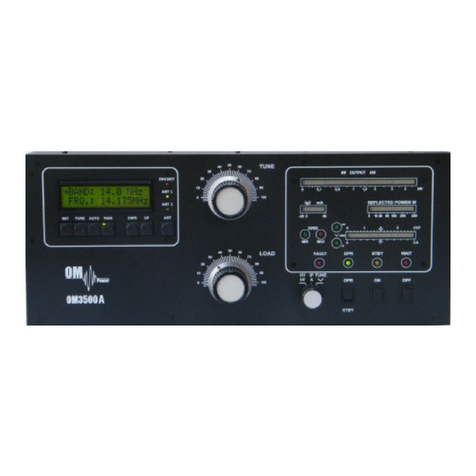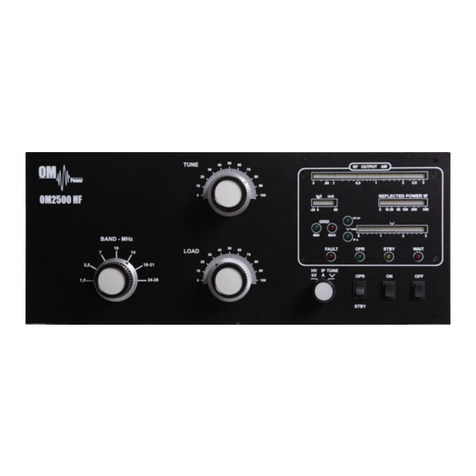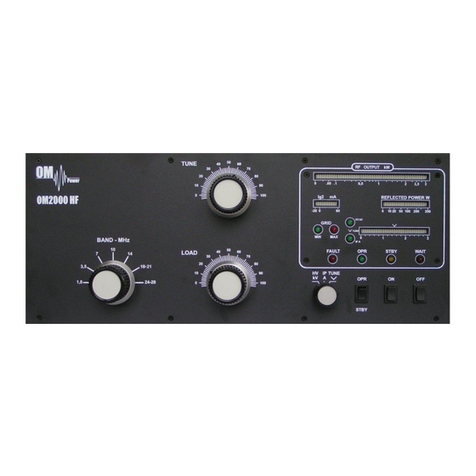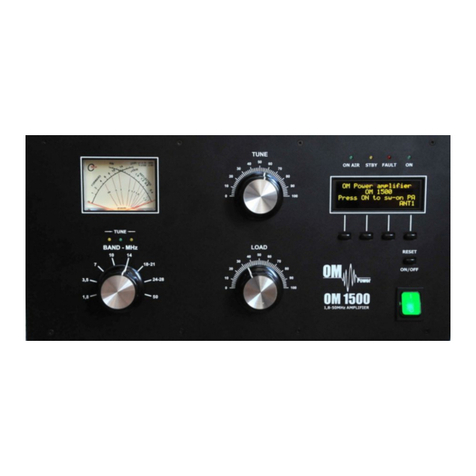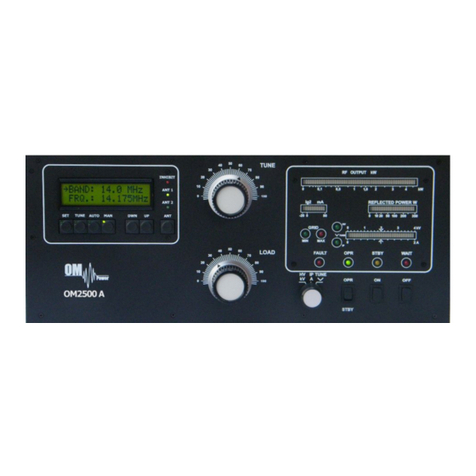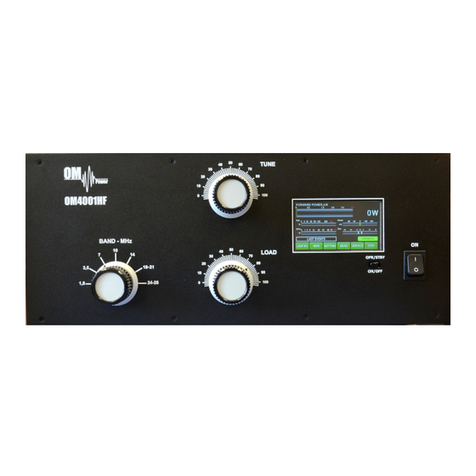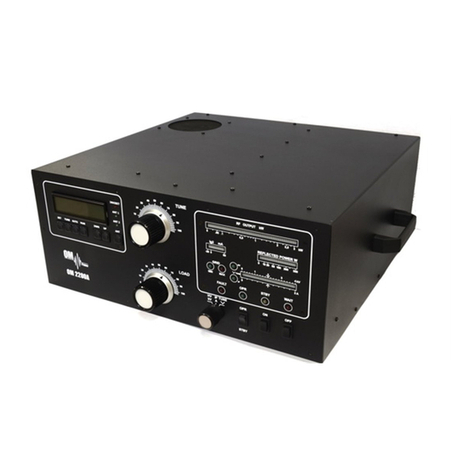4.4. Main Supply
WARNING!
Power Amplifiers OM2500 HF are manufactured for several different power systems.
For US territory only one mains cable is used for two phases (2x120V) system. Cord is
not removable from PA. Amplifier is equipped with two mains fuses (see rear panel).
CAUTION
Be sure you got PA with properly terminated line cable, corresponding with your power
system’s outlet. If not, contact your dealer. In such a case you should make the necessary
changes using a licensed electrician.
WARNING!
Be sure that your power system is correctly wired and properly rated! To use
adequately sized and connected grounding system is also very important.
4.5. Cooling
CAUTION
The amplifier must be installed in such a way that free flow of hot air from the tube is
allowed. Do not obstruct air intake and exhaust areas of the PA.
The centrifugal blowers provide the necessary cooling of the amplifier, even during long
contests. The main blower is activated by switching the PA on and it is turned off when
cooling is finished (approx. 1-5 min after switching off the PA depending on the temperature
of the tube). The supplemental fan is turned on depending on the temperature of the air exiting
from the amplifier. It is switched on at 70°C and switched off at 60°C.
5. OPERATION
WARNING!
Before switching PA on, make sure that amplifier is grounded, antenna or dummy load
is connected, and line cord is putted to the outlet. Do not allow children or unauthorized
person to go close to PA, to touch cables or connectors, to push anything into the case
holes!
CAUTION
Before switching PA on, check all connections between PA and TCVR.
CAUTION
Do not turn PA on for at least 2 hours after unpacking it and locating in its operating
location. Especially when amplifier is moved from a cold place to a warm one because
